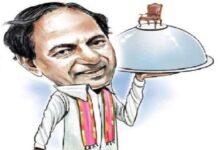Yes, injuries are a part of sports, and they can be especially devastating for athletes who are training for or competing in major events like the World Cup. Unfortunately, the 2023 Cricket World Cup has been no exception, with a number of prominent players missing out due to injury.
Injury and sports, particularly when it comes to performance at international levels, go side by side. With the World Cup underway, cricket is the flavour of the sporting season, at least in the subcontinent. The event has also witnessed the absence of a large number of prominent cricketers who could not make it on account of the injuries sustained while playing pre-event matches.

Some of the most notable absentees include:
- Jasprit Bumrah (India)
- Shaheen Afridi (Pakistan)
- Jonny Bairstow (England)
- Dinesh Karthik (India)
- Deepak Chahar (India)
- Anrich Nortje (South Africa)
- Wanindu Hasaranga (Sri Lanka)
- Naseem Shah (Pakistan)
- Haris Rauf (Pakistan)
- Tim Southee (New Zealand)
These players are all world-class performers, and their absence is a major blow to their respective teams. While it is still too early to say what impact their injuries will have on the tournament, it is clear that the World Cup is missing some of its biggest stars.
In addition to the players listed above, there are a number of other players who are carrying minor injuries and are racing against time to be fit for the World Cup. This uncertainty adds to the drama and excitement of the tournament, but it also makes it difficult for teams to plan and prepare.
Players also sustained injuries during the event, the most prominent name being that of the Indian all rounder Hardik Pandya. He missed matches even as his team cruised along towards the final stages of the tournament.

Among those who had to reportedly miss the World Cup are the names of prominent players like Anrich Nortje (South Africa), Sisanda Magala (South Africa), Naseem Shah (Pakistan), Wanindu Hasaranga (Sri Lanka), Dushmantha Chameera (Sri Lanka), Axar Patel (India), Ashton Agar (Australia), Ebadot Hossain (Bangladesh), Michael Bracewell (New Zealand), Rishabh Pant (India) and Dasun Shanaka (Sri Lanka).
While the World Cup tournament is on, deliberations focusing on science and medicine in cricket took place in Chandigarh recently. They focused on injuries, the stress that accompanies the process of recovery and the possible use of artificial intelligence in managing these injuries.
These deliberations were a part of the Seventh World Conference on ‘Science and Medicine in Cricket’ held at the Post Graduate Institute of Medical Education and Research (PGIMER). Medical experts from various countries, along with sportspersons from cricket as well as other games participated in the three-day event that concluded on Sunday.
Interesting aspects of injuries specific to cricketers were taken up for discussion and sharing. The conference started with two workshops; one focusing on injury prevention which was hosted by the Board of Control for Cricket in India (BCCI) and the second focusing on injury management for orthopaedic surgeons.
“A Study from England done by the cricket board there looked at stress injuries in the back of fast bowlers, and revealed that these injuries happened If the bowlers started bowling fast too early or too late in life. There was something called hardening of the bones over time if the bowlers played properly with sustained incremental workloads
“Take the example of Stuart Broad who did not have any stress fracture of the back as he had paced out his career. It was proposed that some degree of stress to the back is important to keep the bones strong to minimise the risk of injury,” a PGIMER spokesperson said.

John Orchard, an expert from Australia pointed out a study done on the players participating in the Sheffield Shield which is the domestic first class event in that country that showed that cricketers live longer than the general population.
There was a session focusing on cardiac screening in cricket and how this is documented to a limited extent. Jessica Orchard from Australia discussed the need for cardiac screening and the importance of having defibrillator devices at every cricket match.
The Sri Lankan delegation stated that it was the national policy in their country to screen every citizen at the age of 14, to pick up defects in their heart and guide them about future athletic performance. There was a brainstorming session on nutrition and hydration in cricket where the experts discussed the basic nutritional requirements for different age groups of cricketers in different tropics and other zones. A talk on anti-doping methodology which is specific for cricket was also given.
There was a talk on the role of artificial intelligence in sports and how it could be used in the future to minimise the injury rate. “With the use of artificial intelligence, understanding of the scientific and medical aspects of the game, along with advances in surgical and nonsurgical treatment techniques, the chances of injury can be reduced considerably,” was a general observation coming from the experts.
Delivering a talk on the science behind coaching, an expert Andrew Gray stated that one of the issues in cricket was about coordinating the different superstars into performing as a team. He elaborated on the rules of personal management and other mental health issues which the coach should know about.
The team of physiotherapists from the BCCI showed video demonstrations of various types of muscle tightness in players and the most rated specific methods with which these could be reduced. It was pointed out that specialised socks are available online to cure muscle tightness.
Hip and ankle impingement issues, the unique injuries in cricket were discussed by senior orthopaedic surgeons from England and India. The significance of impingement that can happen in the ankle and how this was under diagnosed and under treated was pointed out by giving examples of top bowlers like Brett Lee, Ishant Sharma, Ashish Nehra and Glenn McGrath.

An expert noted that there could be silent injury issues in the players, which are often of no consequence. Dr Mahendra highlighted the deficiencies in the available cricket protective gear and discussed the options and remedies available for improvement.
There were also deliberations on age determination of cricketers which is a problem faced in ‘Age Group Cricket’. There was a demonstration on the methodology that can be used to ensure accuracy of age.
Consultants, mainly from Australia and England, focused on mental health issues of the players and how specific measures could be taken to minimise the stress factor. In one of the sessions Olympic gold medalist Abhinav Bindra highlighted the need for mental strengthening and said there is a difference between mental recovery from stress and mental enhancement to improve performance.
In the same session Indian pacer Irfan Pathan while recounting all the injuries sustained by him during his career underlined that the stress on a recovering player can be very high and all the players do need time to recover physically as well as mentally.
During a special session scheduled on discussion on the mental health of players, especially as an aftermath of the Covid pandemic, Peter Harcourt of Australia demonstrated how the pandemic had affected medical and sports management of almost all sports. Akshay Mansingh from the West Indies talked about the stress faced by both the West Indian and the Pakistan team when they played their cricket in a bubble.
Dr Emal Wardak from Afghanistan highlighted how that country was producing top level cricketers who combine together to play as a great team despite the hardships they endure at home.
The conference that was attended by 350 delegates including 70 international participants from almost all the test playing nations also saw a focused session on the various issues in women cricket that were neglected and not properly understood. It was reportedly discussed how fitness programmes continue to be designed in a manner that primarily cater to the male players.

An informative and interesting lecture was delivered by Professor Sanjay Mittal from Indian Institute of Technology (IIT) at Kanpur where he detailed out the technique of how a cricket ball swings and does reverse swing. He used the air tunnel at IIT Kanpur, which is perhaps the best of its type in the world, and showed how the different balls used in golf; baseball and cricket swing or wobble in different ways.
He elaborated the mechanics and basic principle of physics behind the swing and reverse swing of the ball and proposed a theory where the knuckle ball could be made to move in a zigzag manner by a special seam position which was proven by their air tunnel testing.
Despite the absence of some key players, the 2023 Cricket World Cup is shaping up to be a thrilling event. With so many talented players on display, it is sure to be a competitive tournament with plenty of surprises. ■ #hydnews #khabarlive #hydkhabar







